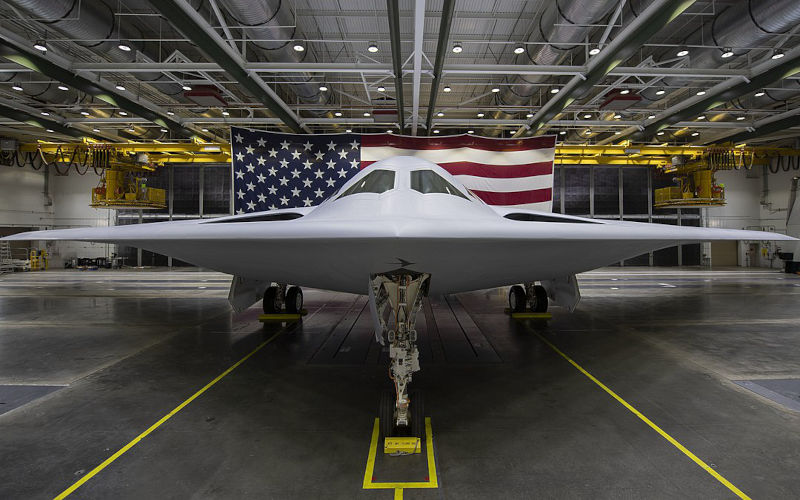Sabre rattling in the US department of attack
December 13, 2022
With America pivoting from a war on terror to provoking China, why not cut to the chase and change the name of the US Department of Defence to the Department of Attack?
Last year, Tom Englelhardt observed that America was pivoting from a war on terror to provoking China which all added up to an enemy-filled future in which Congress must invest ever-more staggering sums in the military-industrial complex. Now, Hollywood razz-ma-tazz has been added to enrich the marketing of this massive military-intimidation project. Here is a suggestion. Why not cut to the chase and conspicuously elevate this strong-arming at virtually no extra cost: simply change the name of the Department of Defence in Washington to the Department of Attack.
When President Xi Jinping of China speaks of what lies ahead for China and the world he regularly promotes a watchful, China-friendly but principally positive and cooperative view of the future. The challenges are immense, but a determined, widely experienced, low-key can-do spirit informs these affirmative communications. Even when Taiwan is mentioned, as it regularly is, the paramount stated objective remains peaceful reunification, with the use of force stipulated as a last-resort.
President Joe Biden and his team, on the other hand, are far more concerned with warning, alarming and, as needs be, scaring the living-daylights out of the whole world about the future. The biggest threat of all, seen from Washington, is not global warming or even Russia. It is China. The recently released US National Defence Strategy insists that China presents the biggest challenge of all to the US.
But calm down and step away from those media-induced Sino-anxiety attacks: America stands ready with another splendid khaki answer to help counter this menace: yet more bombs and bullets!
In early December this year, the very latest B21 stealth bomber was unveiled, with some customary American bounce and energy, by the US Defence Secretary, Lloyd Austin. Both the Guardian and the Wall Street Journal told the world in their coverage that the B21 is designed to counter China. The presentation was scheduled, in fact, well before the B21 is due to be flown: flight-testing has now been postponed to sometime in 2023.
This early-bird, ground-based unveiling was, nevertheless, slickly choreographed. According to Agence France Presse: the national anthem and additional dramatic music were played, lights flashed and older bombers roared overhead. Mr Austin then reassured the world about Americas enduring military advantages in ingenuity and innovation, concluding that no other long-range bomber can match [the B21s] efficiency.
If all goes to plan, this plane will be virtually undetectable in flight and able to launch either short or long range nuclear or conventional missiles. It may also be developed so that it can be flown as pilotless drone, possibly controlling partner drones. Wow - can anyone outclass the US when it comes to Hollywood-style upbeat military marketing celebrating what may well be the most destructive aircraft ever built?
Currently the B21 is expected to cost around US$700 million per plane. Costs of major weapons development programmes have been known to overrun, however.
At about the same time that the B21 was unveiled, CNN reported that the US Navy was sending a message to adversaries (not least China, it is safe to assume) with an uncommon port visit by a nuclear-powered, ballistic missile submarine, the USS West Virginia. This is one of 14 such vessels, which collectively house the destructive power of around 30,000 Hiroshima atomic bombs. This is enough firepower, moving deep within various oceans, to wipe out around 30% of the total world population within an hour.
As it happens, the port visited was the huge US Indian Ocean base in the Chagos Islands, at Diego Garcia. As John Menadue recently explained: With the cooperation of the UK [after the British forced the original inhabitants to leave their homeland] the US has occupied Diego Garcia and turned it into a vast military base in defiance of an International Court of Justice advisory opinion and an overwhelming vote by the UN General Assembly.
It is possible that providence may yet step in to moderate the impact of the swaggering deadly threat posed by the B21. Its predecessor, the original stealth bomber, the B2, has been widely used in attack roles since it first flew in 1989. But the projected number of over 130 B2s was reduced to 21, each of which has cost US$2.2 billion (in 2022 dollars) according to a recent report in the Guardian. The same report observed that these bombers had to be housed in large air-conditioned hangars to stop the cockpit electrics from frying. Moreover, Dan Grazier, a Senior Defence Policy Fellow at the Project on Government Oversight, recently noted that, It is easy to say that the B21 is still on schedule before it actually flies but it is only when one of these programmes goes into the actual testing phase that real problems are discovered.
The message delivered by this intensification of high-volume military marketing is clear: whoever you are and wherever you are, if you are getting up to serious mischief that America cannot abide, then watch out, because the US is comprehensively equipped to come, and if needs be, take you out using superior military means.
Here is a suggestion. Why not cut to the chase and conspicuously elevate the intimidation level at virtually no extra cost: simply change the name of the Department of Defence in Washington to the Department of Attack.

